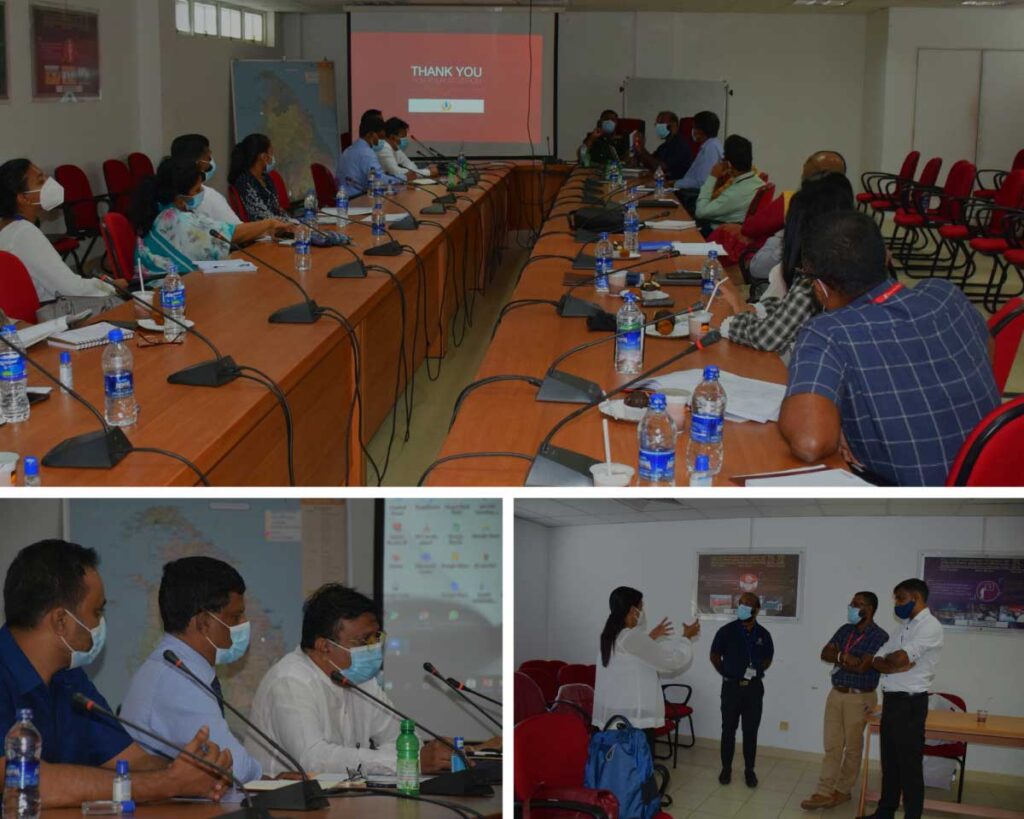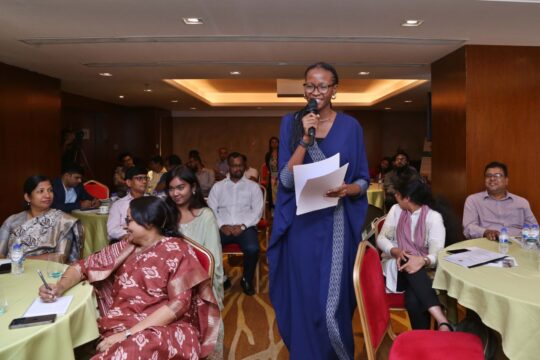In 2019, 87,000 Sri Lankans were displaced due to disaster events. When communities or groups lose their homes, shelters play a vital role in response and recovery. The ‘Preliminary Consultative Group Discussion: Reviewing and Contextualization of Humanitarian Standards for Safe Centers’ took place on 05, February 2021. The event was organized by the Disaster Management Centre (DMC) in collaboration with Janathakshan Gte. LTD and the Asian Disaster Preparedness Center (ADPC) under Sri Lanka Preparedness Partnership (SLPP).
There were 24 participants who were representatives of relevant government institutions, United Nations (UN) agencies, and civil society organizations (CSOs). The session served as an initial meeting to make the government and other organizations aware of the initiative and acquire their support in the process of achieving it.
The meeting was called to analyze the role of safe centers and how effectively they are fulfilling the basic and specific needs of all demographic groups. Standards for these shelters are set by multiple stakeholders. The challenges lie in addressing the gaps in terms of sensitization, knowledge and awareness, resources, and enforcement for these shelters. The current review on the humanitarian standards that are being undertaken seeks to identify, address, and minimize these gaps. The DMC and relevant stakeholders are taking the initiative to alleviate challenges arising out of such calamities.

The SLPP is making its own contribution to this approach. The partnership will contextualize the existing humanitarian standards to cater to the needs of disaster-affected populations and the practical gaps that need to be addressed. Going forward, the key actions include defining the scope of the initiative, developing terms of reference (TOR) for the technical team, and one that will identify relevant sub-groups.
The key expectation of this whole process is to satisfactorily ensure that the needs and rights of displaced people seeking temporary assistance and protection in safe centers during natural and man-made disasters are met. The meeting laid the foundation for the subsequent step to take this progress forward:
- Formation of a core technical committee to lead and coordinate the process,
- Creating sub-groups to work on specific technical thematic areas with the participation of key technical agencies, and
- Defining the coper of the initiative to allocate specific tasks that need to be undertaken


